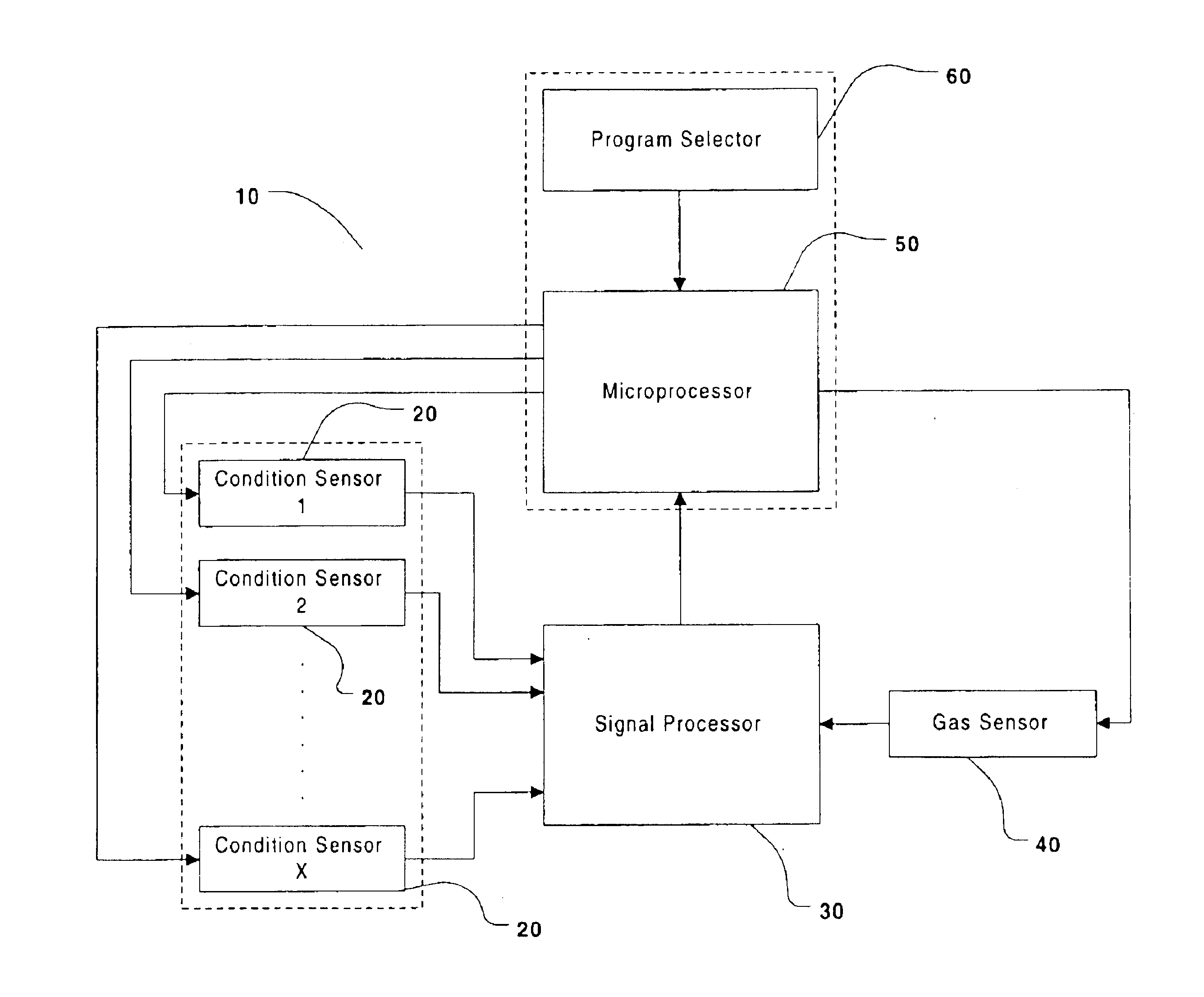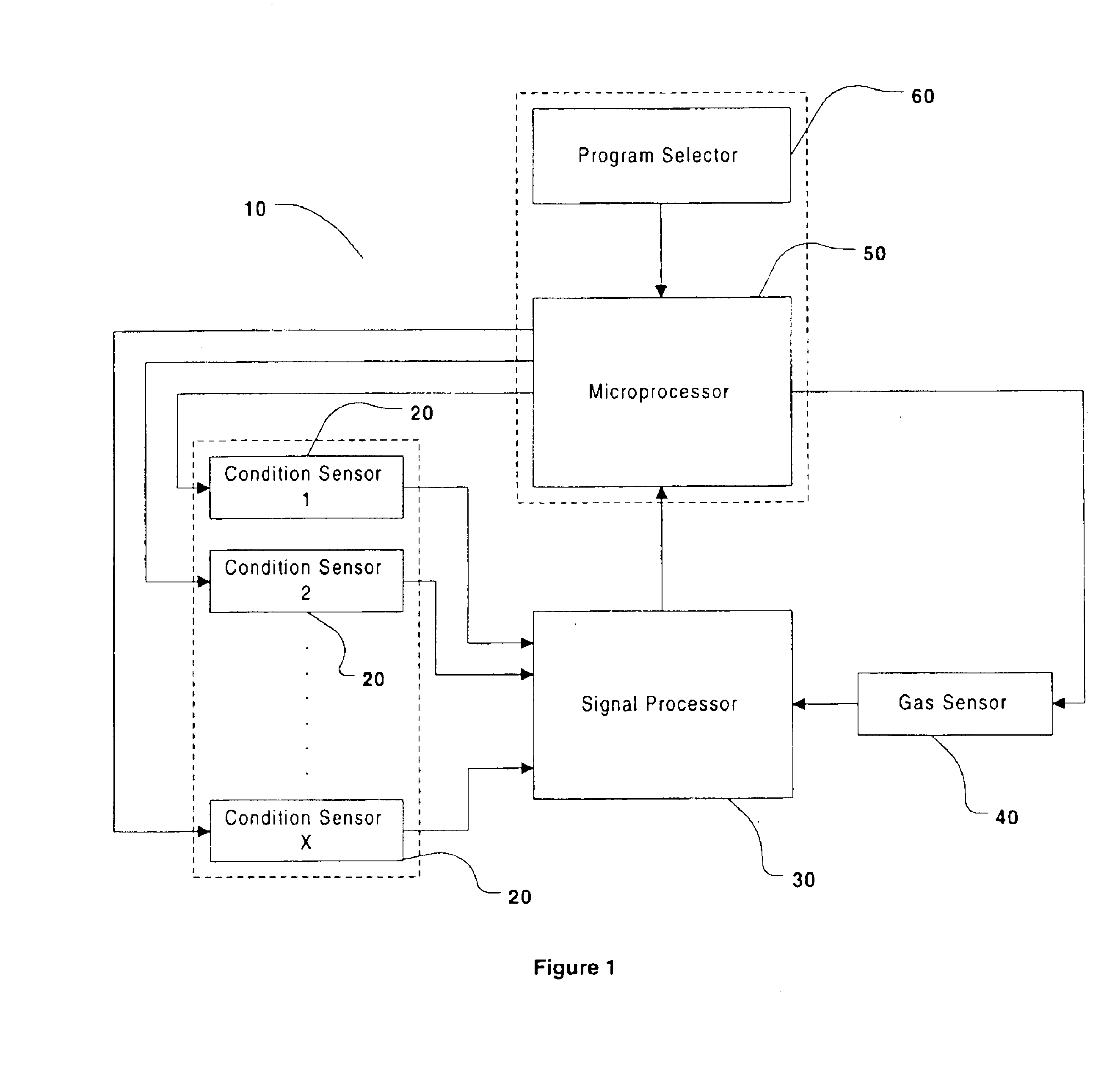Systems for controlling a drying cycle in a drying apparatus
a drying apparatus and drying cycle technology, applied in the direction of non-surface active detergent solvents, drying machines with progressive movements, organic/inorganic per-compound compounding agents, etc., can solve the problem that the drying of items cleaned with lipophilic fluid cannot be done automatically with the use of only a humidity sensor, and the drying of items cleaned with lipophilic fluid cannot be done automatically
- Summary
- Abstract
- Description
- Claims
- Application Information
AI Technical Summary
Benefits of technology
Problems solved by technology
Method used
Image
Examples
Embodiment Construction
Definitions
The term “lipophilic fluid” used herein is intended to encompass any non-aqueous fluid or vapor capable of removing sebum, as qualified by the test described below.
The term “fabrics” and “fabric” used herein is intended to mean any article that is customarily cleaned in a water-based laundry process or in a solvent-based dry cleaning process. As such the term encompasses bulk fabrics and fibers, as well as finished articles of clothing, linens, drapery, and clothing accessories. The term also encompasses other items made in whole or in part of fabric, such as tote bags, furniture covers, tarpaulins and the like.
The term “condition detector” used herein is intended to mean any detector and / or sensor capable of quantitatively and / or qualitatively measuring some scientific quality. These qualities may include, and are not limited to, time, temperature, fluid flow, and torque. Further, the measure may be of a physical quality within the drying apparatus (e.g., torque on the s...
PUM
| Property | Measurement | Unit |
|---|---|---|
| Fraction | aaaaa | aaaaa |
| Fraction | aaaaa | aaaaa |
| Time | aaaaa | aaaaa |
Abstract
Description
Claims
Application Information
 Login to View More
Login to View More - R&D
- Intellectual Property
- Life Sciences
- Materials
- Tech Scout
- Unparalleled Data Quality
- Higher Quality Content
- 60% Fewer Hallucinations
Browse by: Latest US Patents, China's latest patents, Technical Efficacy Thesaurus, Application Domain, Technology Topic, Popular Technical Reports.
© 2025 PatSnap. All rights reserved.Legal|Privacy policy|Modern Slavery Act Transparency Statement|Sitemap|About US| Contact US: help@patsnap.com



